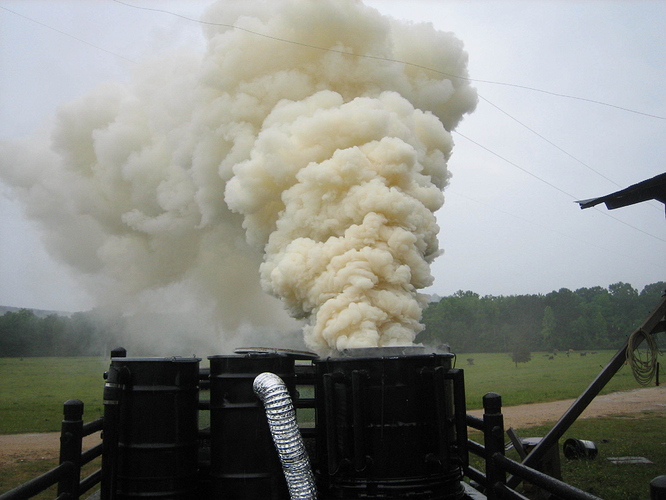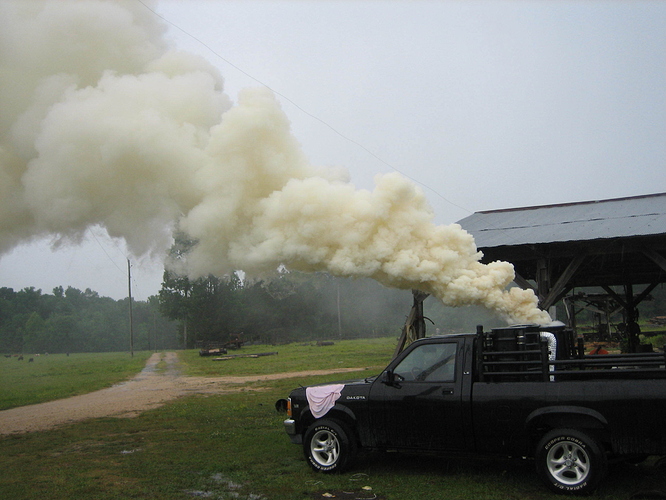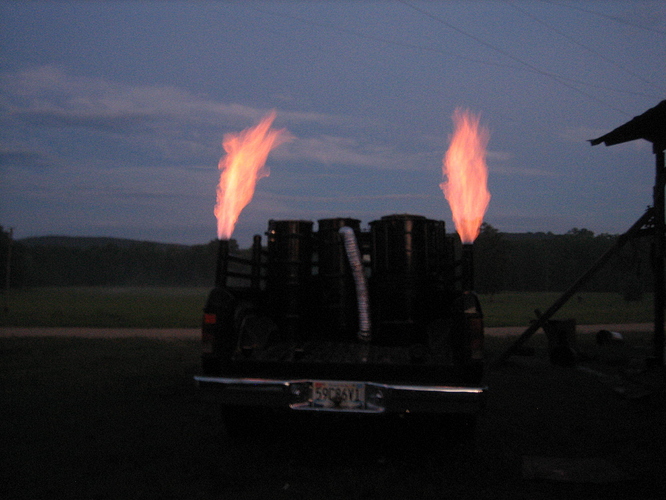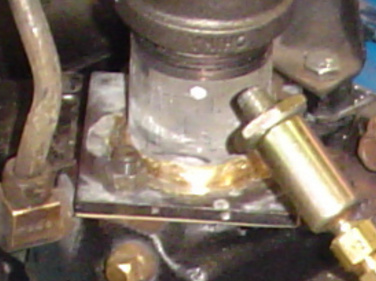Hi Nick1911,
Here are a couple of easy ways to make charcoal that you can fit into the weekend and amaze the company. Also a lot of adults have never seen smoke burn.
My charcoal setup for my wood stove. PS you can have several of these going at the same time.
Another simple method
Still another method would be to fill a 5 gallon metal bucket with wood, add a cover with some holes and set it on top of a campfire and cook it off (burn the smoke as it leaves the holes) and when the flames go out the charcoal is ready to rest in an airtight configuration overnight, not inside any buildings. A single spark can eat up all that charcoal and consume all the oxygen in a tight room. Asphyxiation would be a real concern.
Make sure when you remove the cans from the fire to turn them upside down in dirt so no air can get in and consume your charcoal.
Fill your gasifier from the grate to 4"-5" over the nozzles. Start a small wood fire on top of the charcoal, start the fan and when the charcoal starts, fill the unit with dried wood and close the top. Keep testing the smoke until a flame sustains. Voila, you have usable woodgas.
On another note, I’m sure it does, but can you confirm that your gasifier has a drain port. I know you paid for the book so I don’t want you to disclose any of Ben’s proprietary information. I think my request is safe since I don’t want to know the design sequence or method, just does one exist?
I have a few other vids I can pull together that illustrate my runs and water separation /collection that you might find informative. I can shorten the watching time by supplying an index of high points shortly. You can view my stuff here:
I must respectfully disagree that hopper lid leaks don’t matter.
Enjoy the Holidays,
Pepe
EDIT 12/24/2016
Sorry, you’ll have to run through the vids to select, they can’t be sorted numerically or alphabetically on YouTube. Since we were talking about water, there’s some shots here showing how much water comes from drying the “dry” fuel. Just some general information and operating results from my imbert like gasifier you might find interesting.
1Fuel analysis 1 8-20-2011. This was a fluidyne design with 1/2" nozzles (too big), start with
1/4" for better penetration. @1:38 note mistake of using large square washer which blocks
the flow.
2My second ICE run on woodgas-7-29/12. @:09 note elbows for nozzle inlet air before the
single port air inlet manifold fix. @:27 see the bottom of the white PVC hopper drain at the
upper right of the gasifier. this has a shutoff to close before unscrewing it to empty. pita.
add drain pic
3Part 2 Oct 16, 2013. Startup, run,preheat gain, cooler temp. @3:50 we see the upper hopper
drain arrangement.
4third burn 8 17 2015. @ 2:08 see vibrator run. Also note the bump house blower used as fan.
5Third burn results 8 18 2015. @:36 condensate drain in moat is plugged (or so I thought). The
globe valve failed to open. @:50 better view. @1:23 40 oz. condensate drain.
6Monorator hopper first firing July 17, 2014. @1:23 drain hopper
7Third run with monorator hopper 7/29/2014. @6:26 monorator hopper drain, 1 pint.
@7:14 original cooler drain 1-2 tbsps. Monorator hopper does a great job of collecting condensate at the beginning of the process
8Part 1 New Fall setup with mods aspect ratio 4 x 3. @ 4:25 see old hopper drain
9Gasifier run with vibrator made 11 24. I moved the vibrator up closer to the monorator
hopper later. @6:19 check for system water. Water in vaccum cleaner from start up, about
1/2 cup. @8:27 drain cooler. Vacuum cleaner is go for that size gasifier.
10Swirl burner start and some operating flow temp. @1:46 view of cooler
11Second run Aug 2015. @:04 good view of bump house fan setup.







